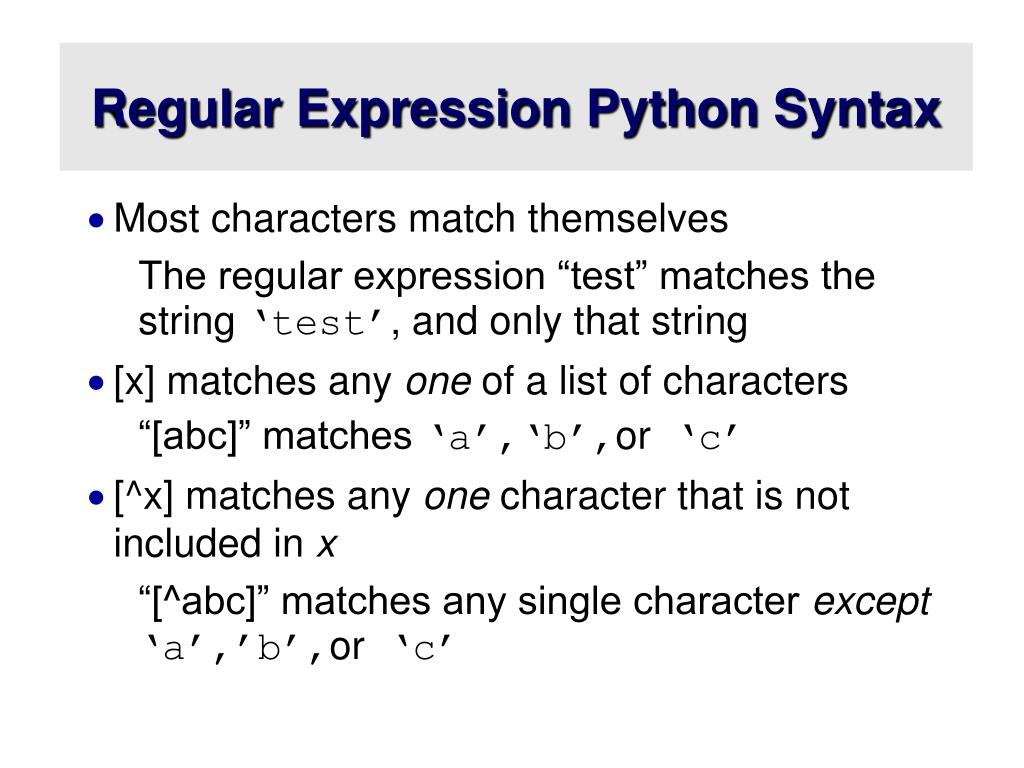

- REGULAR EXPRESSIONS FOR TEXTASTIC FULL
- REGULAR EXPRESSIONS FOR TEXTASTIC CODE
- REGULAR EXPRESSIONS FOR TEXTASTIC MAC
Because Markdown is really just text, any text editor will do.
REGULAR EXPRESSIONS FOR TEXTASTIC MAC
I’m sure you already have a favorite Mac text editor, and you might prefer to use that for writing Markdown as well. Then we’ll cover the other alternatives, starting with file-based editors, then moving to library-based applications. So let’s start by looking at popular text editors that support Markdown. You might even be better off with an online Markdown editor that runs in the browser.

Not all editors support every feature, so the trick is to find the one that does what you need. There’s a rich landscape of Mac options, and the best choice for me may not be the best choice for you.
Advanced formatting, including tables and mathematical expressions. Some editors have an iOS version so you can keep working while you’re on the move. A document library to organize your content and sync between devices. Features that appeal to writers, including word count, readability scores, and versions. A distraction-free mode that takes advantage of features like full-screen editing, dark mode and typewriter mode. Some Markdown editors can publish directly to WordPress, Medium and more. Export and conversion features that easily transform your document from Markdown to HTML, PDF, DOCX or a number of other formats. Familiar keyboard shortcuts, like command + B for bold. Syntax highlighting and a preview pane to show you how your final document will look. Here are some features you might expect to find in your favorite Markdown editor: But using an editor designed for writing in Markdown has a lot of advantages, depending on your needs. It’s now also used in a wide variety of applications, as we’ll explore below.īecause Markdown is just plain text, you can create it with any text editor. It’s certainly an easy and efficient way to create online content, and has a number of benefits for writers and bloggers. The syntax was created by John Gruber way back in 2004 and became popular in blogs and forums. It’s simpler and faster than adding HTML markup, and doesn’t have the lock-in of using something like Microsoft Word. I’m aware that those are pretty minor commands, but they’re so much easier when they’re just one two or three letters.Īlso, oh my zsh does come with an alias for committing changes with a message, but it’s gcmsg and that’s longer than just using gc with the -m option.Markdown provides a convenient way to add formatting to a plain text document, while leaving it in plain text. gf: git fetch- fetches branches and tags from the configured remote repo. gp: git push - pushes commits to the configured remote repo. gc -m "": git commit -v -m "" - commits the current changes with a message. gaa: git add -all - adds all changes in the current directory. REGULAR EXPRESSIONS FOR TEXTASTIC FULL
Here are the ones I use the most, and also what the full command is: And that is where oh my zsh comes in handy, as it comes with a huge number of aliases for common Git commands.
fork: Opens the current directory in Fork - A Git GUI, for when I want to dig into any conflicts.īeing a developer, I use Git quite a lot. REGULAR EXPRESSIONS FOR TEXTASTIC CODE
vs: Opens the current directory in Visual Studio Code.xcw: Opens a xcworkspace in the current directory.xc: Opens a xcodeproj in the current directory.But even if I don’t have one set up for each project, I’ve got one that puts me at the root of my developer folder anyway.Īs for applications, I’ve got a few that I use a lot: That’s just a small snippet, but usually, I have most projects set up with a very small alias. dev: developer directory where I store all projects.Here are a few examples of directories I have set up with aliases: The majority of them are for two things - moving to common directories, and launching applications. But because they’re used so often, it saves so much time. The most helpful commands that I use have to be aliases for the most minor commands. Note: I use ZSH as my shell, with oh my zsh, so they may differ slightly if you’re using something different. I’ve noticed myself using the command line a lot more recently, at home, and work, so I thought I’d share a few of the little tools and handy commands that I use on a day to day basis.






 0 kommentar(er)
0 kommentar(er)
